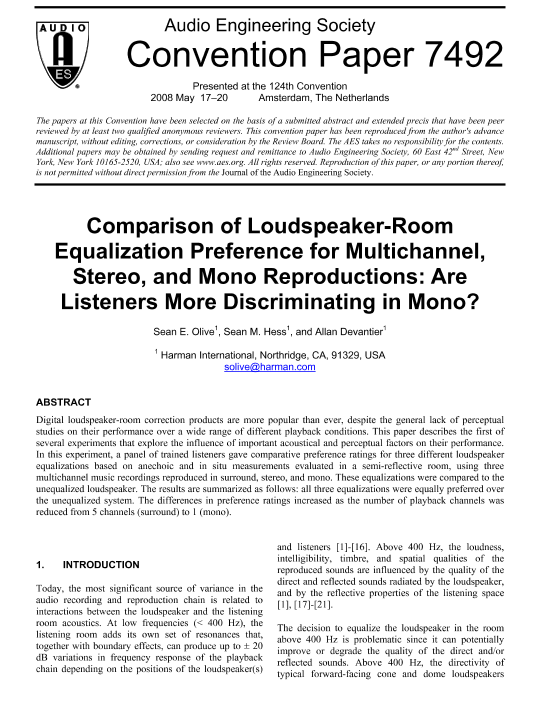The did one better. They tested from mono all the way to 5 channels:
Comparison of Loudspeaker-Room Equalization Preference for Multichannel, Stereo, and Mono Reproductions: Are Listeners More Discriminating in Mono?
Sean E. Olive1 , Sean M. Hess1 , and Allan Devantier1 1 Harman International, Northridge, CA, 91329, USA
"In this experiment, a panel of trained listeners gave comparative preference ratings for three different loudspeaker equalizations based on anechoic and in situ measurements evaluated in a semi-reflective room, using three multichannel music recordings reproduced in surround, stereo, and mono. These equalizations were compared to the unequalized loudspeaker. The results are summarized as follows: all three equalizations were equally preferred over the unequalized system. The differences in preference ratings increased as the number of playback channels was reduced from 5 channels (surround) to 1 (mono)."
View attachment 300608
Look at how much worse the "No EQ" rates were in mono (blue) vs stereo (red) vs surround (black).


